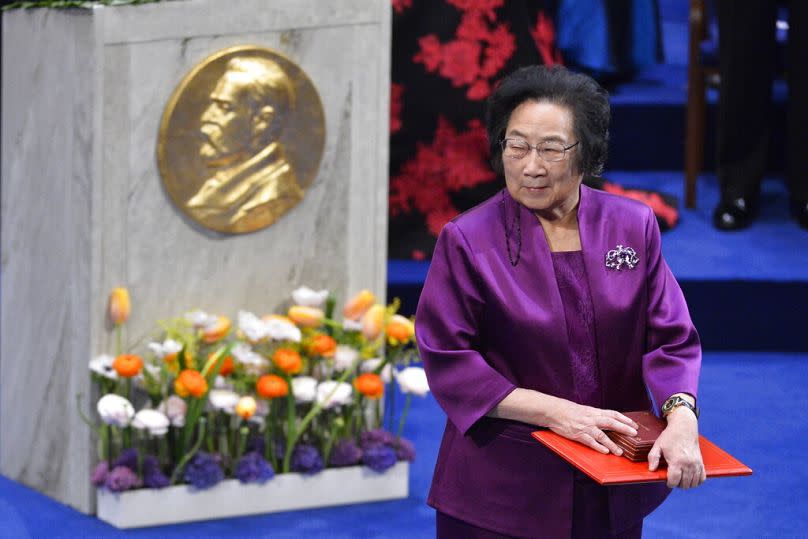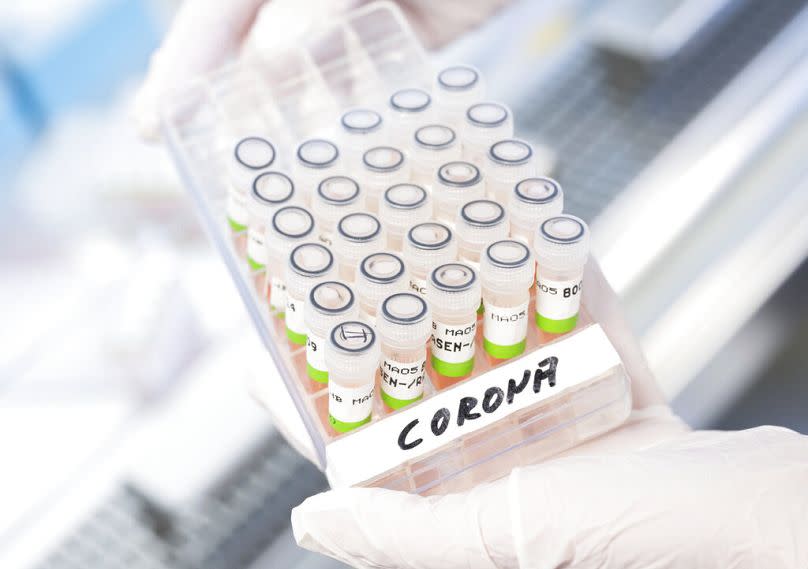Back in 1968, US Senator Robert Kennedy claimed that GDP “does not measure our wisdom or our learning – it measures everything, in short, except what makes life worthwhile”.
Just as GDP can measure economic growth and prosperity but not benefit from or progress towards sustainable development, the volume of scientific publications is also a measure of quantity rather than quality.
The limits of the “public or die” mantra were highlighted in 2015, when Tu Youyou was awarded the Nobel Prize “for her discovery of a novel therapy against malaria” that she had developed in a Chinese laboratory 40 years earlier.
As indicated in the UNESCO Science Report, the laureate had an atypical profile. She was not well known in China before winning the prize and was not an honorary academic (yuanshi) Chinese Academy of Sciences or Chinese Academy of Engineering.
In addition, as outlined in the report, “In 2020, the Ministry of Education and the Ministry of Science and Technology issued a directive discouraging universities from rewarding researchers with high published output with bonuses, awards, jobs or promotions, in an attempt to remove them. incentives that encouraged scientists to publish one paper after another, rather than focusing on high-impact work”.
Neglect of society’s needs undermines confidence in science
Other countries are also reassessing their adherence to the “publish or perish” mantra as a measure of scientific performance.
Too often, scientific research is conducted that has little to do with the challenges facing the population, such as poor water quality or climate-vulnerable crops.
This neglect of society’s needs undermines confidence in science. A population that does not see the benefits of science may be less supportive of the scientific enterprise.

Of course, scientists must also enjoy intellectual freedom. By definition, basic research has no immediate application, even if, over time, its spin-offs can lead to radical change.
It was basic exploratory research that led to the sequencing of the first human genome in 2003. The Human Genome Project was a pioneer in open science.
The project also produced high-impact research that created an entirely new scientific discipline: genomics.
Today, gene therapies are the cause in the field of genomics, for example for cancer patients. It is thanks to genomics that the coronavirus responsible for the COVID-19 pandemic could be identified so quickly in early 2020.
A long road ahead
The COVID-19 pandemic has highlighted this virtue of science: the culture of sharing. It was this culture that accelerated the development of the first vaccine.
Pharmaceutical companies published their data on vaccine development in specialized journals where virologists and other specialists could see them.
Major commercial publishers, science funders and others are committed to making all research and data of the COVID-19 outbreak immediately available.


Some 193 governments saw in real time the benefits of this shared culture before endorsing, in November 2021, the UNESCO Recommendation on Open Science, by which they committed to make openness a hallmark of the practice of science in their respective countries.
UNESCO is monitoring progress towards this goal. On 14 December, he launched UNESCO’s Open Science Outlook, the first global assessment of the status of open science, which draws on input from experts around the world.
There is still a long road to travel, as progress is far from uniform.
The number of open access scientific publications, collaborative research platforms, open repositories, open source software and hardware is increasing but there are significant differences between disciplines and regions.
Although 60% of scientific articles related to good health and well-being are now available in open access, around 50% of articles on climate change are still locked behind the pay walls of scientific journals, such as 57% of those do on clean water and sanitation and 48% of them. of those on biodiversity, despite the fact that each of these areas is the focus of a Sustainable Development Goal to be achieved by 2030 — and despite the fact that this research is publicly funded.
Open science needs investment to thrive
Furthermore, the focus so far has been on ensuring open access but this is only one component of open science; openness also means fostering dialogue and engagement with wider society.
Less emphasis has been placed on increasing participation in science, for example recognizing the contribution of citizen scientists and Indigenous knowledge or the role that communities may play in co-designing certain research projects.
The ongoing socio-economic, technological and digital gaps among countries and communities are a reflection of the unfinished agenda of open science. To be successful, investment in open science is required.
Access to funding but also the necessary skills and tools is uneven, hindering the realization of the full potential of open science. Until these barriers are lifted, the promise of openness in science will remain unfulfilled.
Mainstreaming open science will mean making it the norm for all scholarly pursuits. This will require a cultural shift. We call on governments, institutions, researchers and inventors everywhere to join us on this transformative journey.
Lidia Brito is Assistant Director-General for Natural Sciences at UNESCO.
At Euronews, we believe that every opinion matters. Contact us at view@euronews.com to send pitches or submissions and be part of the conversation.